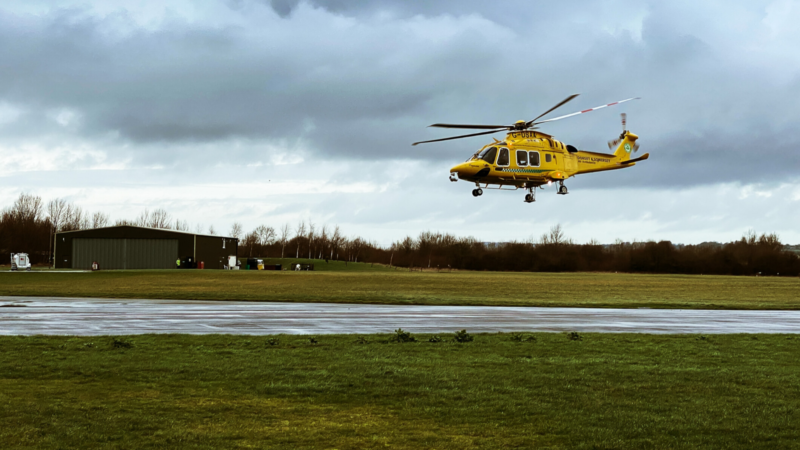When Brain Injury Strikes, Air Ambulances Save Lives
July 7, 2020

By Susan Connors and Carter Johnson
Just as no two brains are alike, no two brain injuries are alike. Stroke, seizures, falls, assaults, motor vehicle accidents, and drug overdoses – these events cause brain injuries every day, yet it’s difficult to predict how each will affect each person. One thing that remains consistent across these types of injuries, however, is that they can change everything about a person in a matter of seconds – including how they act, think, and feel.
When a brain injury occurs, every second counts to save a life and preserve brain function. That is why air ambulances are critical to individuals who sustain brain injuries – they transport these patients to the care they desperately need as quickly as possible while treating them in the air. This immediate action can lead to improved outcomes.
Emergency air medical transport is particularly important in rural areas, where more than 170 hospital closures since 2005 have left millions living an hour or more away from the nearest Level 1 or Level 2 trauma center. These trauma centers are the best facilities to treat brain injuries because of the continuous neurosurgical care these settings can provide.
While rural hospitals were already closing at alarming rates, recent reports indicate they will continue to do so as a result of the coronavirus pandemic and its financial ramifications. This means that the air medical industry will become even more critical in rural areas where it ensures patients have swift access to care, despite how far they live from the nearest emergency room.
Unfortunately, as with some hospitals, the air medical industry is facing an unprecedented strain as a result of the coronavirus pandemic. Air medical providers have faced increased operation costs – investing heavily in additional Personal Protective Equipment (PPE) and aircraft decontamination procedures – while also experiencing significant decreases in transports due to the impact of stay-at-home orders and massive business closures. These additional cost pressures, particularly in rural areas where these services are so critical to people with brain injury, are threatening the industry.
But as anyone who owes his or her life to the swift transport of an air ambulance will tell you, this is not an industry we can afford to lose.
That is why the Brain Injury Association of America (BIAA), whose mission is to advance awareness, research, treatment, and education and to improve the quality of life for all people affected by brain injury, joined the Save Our Air Medical Resources (SOAR) Campaign and several other patient advocacy organizations in sending a letter to Congress asking for air ambulance inclusion in coronavirus relief aid.
While the pandemic has exacerbated cost pressures, the air medical industry was already facing financial headwinds that resulted in 57 base closures last year alone. The companies forced to close their bases cite low reimbursement rates from Medicare and Medicaid, as well as insurers refusing to bring their services in-network and even refusing to cover the full cost of a patient’s bill based on “medical necessity.” Since 100 percent of all air medical transports are deployed by first responders or doctors, this is just another way for insurers to deny claims and increase profits at the patient’s expense.
BIAA advocates for policies at the federal level that improve the lives of those who have sustained a brain injury and speaks out against legislation that would unintentionally hinder access to care. The SOAR Campaign seeks to protect and preserve access to emergency air medical services for all Americans. Together, we believe Congress must ensure air ambulance providers can access resources intended to reimburse the health care industry in future coronavirus relief legislation to preserve the industry and thus protect future brain injury patients’ access to critical care.
Brain injuries can happen anytime and anywhere. Congress must make sure that patients have access to life-saving air medical transport so they can get the care they need quickly. To do otherwise would be a grave mistake.
Susan Connors is the president and chief executive officer of the Brain Injury Association of America. Carter Johnson is the spokesperson for the Save Our Air Medical Resources Campaign.
Photo byFas Khan

